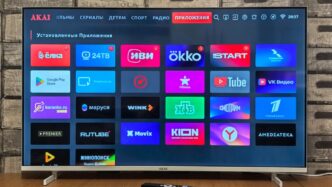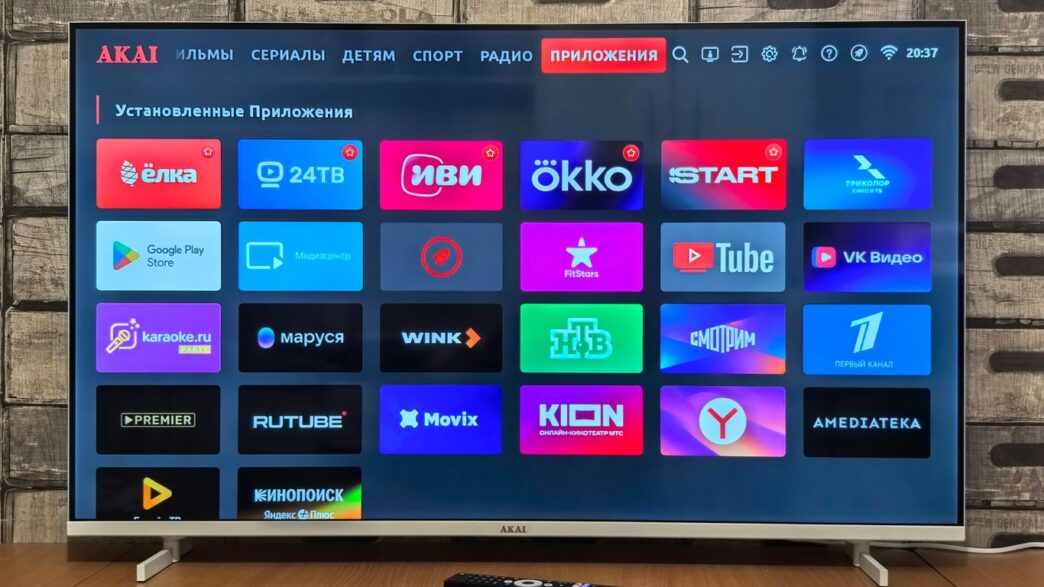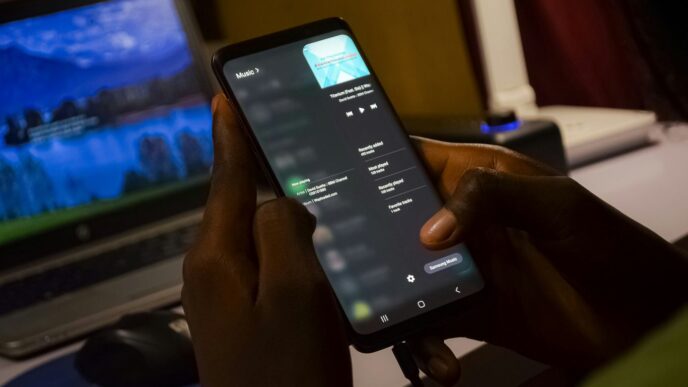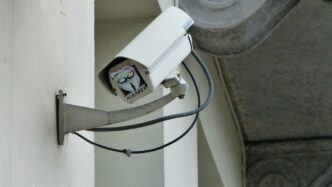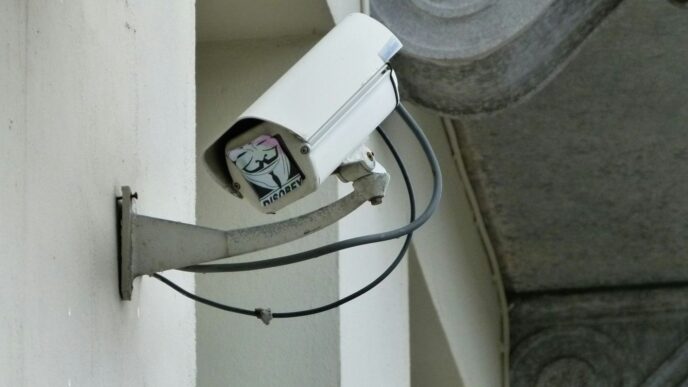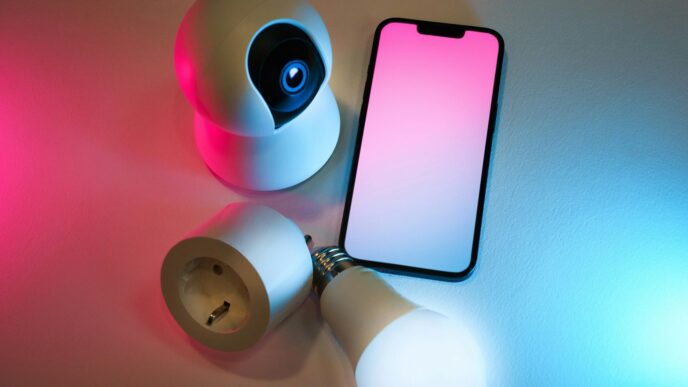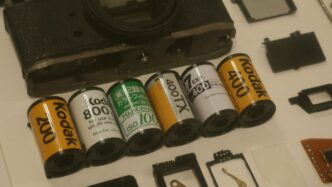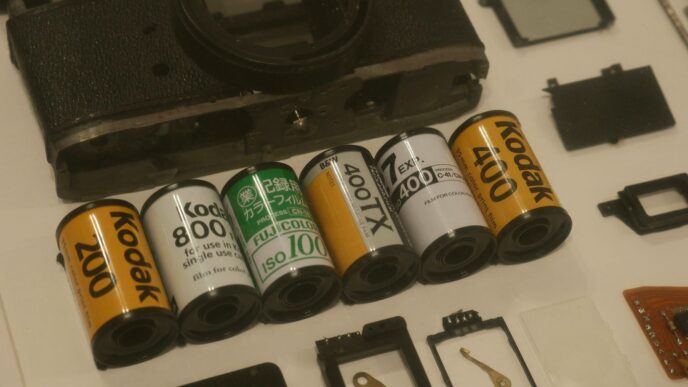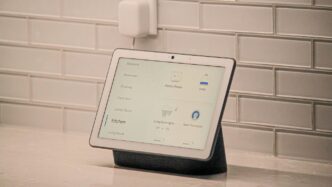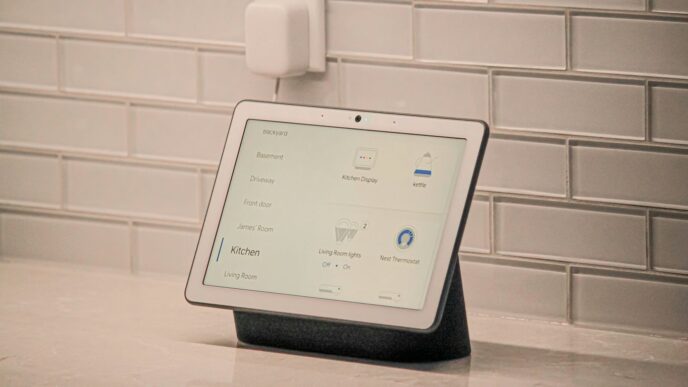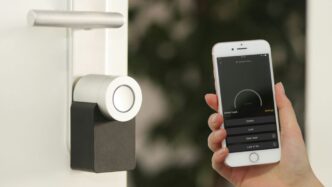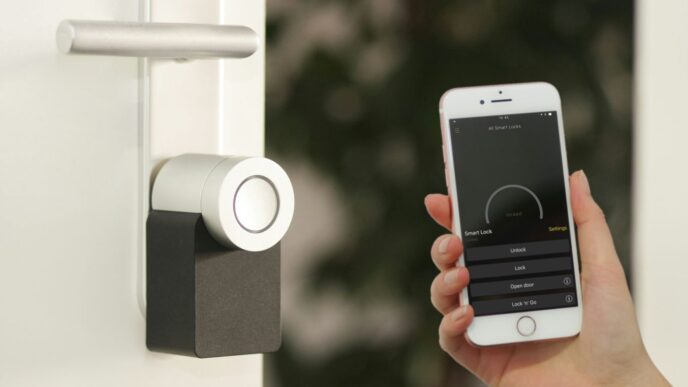So, have you ever thought about how movies are changing? It’s not just about what happens on the big screen anymore. We’re talking about movies that connect to your life, right in your own house. This idea, the smart home film, is pretty new and it’s changing how stories are told. It’s like the movie is spilling out of the screen and into your living room, making things way more interactive. Let’s check out what this is all about.
Key Takeaways
- The smart home film is a new way to tell stories that uses connected technology in your house to make movies more interactive and personal.
- These films are moving beyond just a single screen, using other devices and even the environment of your home to build the story.
- Storytelling is getting fragmented, with parts of the narrative appearing on different screens or at different times, and user data might even shape the story.
- Smart home films explore big ideas like privacy, how we connect with others when everything is digital, and the line between what’s real and what’s not.
- The future could see movies that predict what you want, dive into virtual worlds, and bring up important questions about how we use technology in storytelling.
The Smart Home Film: A New Frontier
It feels like just yesterday our homes were just places to sleep and eat. Now, they’re practically buzzing with technology. Think about it: lights that turn on when you walk in, thermostats that learn your schedule, and refrigerators that can tell you when you’re low on milk. This isn’t science fiction anymore; it’s becoming everyday life. The smart home is no longer just a concept; it’s a rapidly expanding reality.
Defining the Smart Home Film Experience
So, what exactly is a "smart home film"? It’s not just about watching a movie on a smart TV. It’s about how the technology within our homes starts to play a role in the stories we consume, or even become part of the story itself. Imagine a thriller where the house’s AI locks you in, or a drama where your smart fridge suggests comfort food after a breakup. The lines are blurring between the passive viewing experience and an active, integrated one.
Technological Integration in Narrative
This new wave of storytelling is deeply tied to the tech that’s popping up everywhere. We’re seeing more than just voice commands; we’re talking about systems that react to our presence, our moods, and even our health data. For example:
- Personalized Lighting: Lights adjust color and intensity based on the movie’s mood or your biometric feedback.
- Ambient Soundscapes: The home’s audio system can subtly enhance the film’s sound design, making it feel more immersive.
- Interactive Elements: Your smart display might show character bios or plot hints that appear only when you interact with them.
Audience Interaction and Immersion
This isn’t your grandpa’s movie night. The goal is to pull you deeper into the story. Instead of just watching, you might find yourself interacting with the narrative in small ways. Maybe your smart speaker offers a character a piece of advice, or the blinds close automatically during a tense scene. It’s about making the home environment a participant in the cinematic experience, creating a level of immersion that was previously impossible.
Evolution of Smart Home Storytelling

It feels like just yesterday we were all glued to our TVs, watching stories unfold on a single, flat screen. But things have really shifted, haven’t they? The way stories are told, especially when they involve our homes, is changing big time. We’ve moved from just passively watching to something much more active and, honestly, a bit wild.
From Static Screens to Dynamic Environments
Remember when a "smart home" in a movie meant a fancy intercom system or maybe lights that turned on automatically? Those days are pretty much over. Now, the entire house can be a character, or at least a major player, in the story. Think about it: a house that reacts to a character’s mood, a kitchen that suggests recipes based on what’s in the fridge and your health data, or even a security system that recognizes who’s at the door. It’s not just about gadgets anymore; it’s about environments that are alive and responsive. This shift is a big deal for how filmmakers can create atmosphere and drive the plot. The technology is evolving faster than ever, with integrators shaping home design as much as interior designers do. It’s like the house itself has a personality now, and that opens up a whole new world for storytelling. We’re seeing this evolution in how films are made, moving beyond traditional movie production to new methods for digital content film technology in the streaming era.
The Rise of Second Screen Narratives
This is where things get really interesting. Beyond just the main screen, our phones and tablets are becoming part of the story. It’s like having a secret diary or a hidden message system connected to the movie. Early attempts at this, like interactive DVDs in the 90s, were a bit clunky. You’d press a button, and maybe the camera angle would change. But with today’s tech, it’s way more sophisticated. Imagine getting a text message from a character on your phone during a scene, or being able to look up clues on a tablet that are relevant to what’s happening on screen. This "second screen" experience adds layers to the narrative, making the audience feel more involved. It’s a way to expand the story world without cluttering the main viewing experience. The flexibility of apps means these stories can be updated and changed, keeping things fresh and dynamic in a way physical media just couldn’t.
Interactive Elements in Smart Home Films
So, what does "interactive" actually mean in this context? It’s more than just choosing a path in a video game. In smart home films, interactivity can be subtle or overt. It might involve:
- Environmental Reactions: The smart home systems within the film’s narrative directly respond to character actions or plot points. For example, lights flickering when a character is scared, or doors locking themselves during a tense moment.
- Information Access: Viewers might be prompted to use a companion app or website to access character backstories, hidden clues, or alternative plotlines. This pulls the audience deeper into the story’s universe.
- Personalized Story Arcs: In more advanced scenarios, the narrative could subtly adapt based on viewer choices or even data gathered (with permission, of course) from their own smart home devices, creating a truly unique viewing experience.
This move towards dynamic environments and audience participation is transforming how we think about movies and TV shows, making them less of a passive experience and more of an ongoing conversation between the story and the viewer.
Narrative Structures in the Smart Home Film
Okay, so thinking about how stories are told in these smart home movies is pretty wild. It’s not like your typical movie where you just sit back and watch. Things get a bit more… jumbled, I guess you could say.
Fragmented Consumption and Storytelling
Remember how TV shows used to be just one episode a week? Now, with smart homes, stories can feel like that, but even more broken up. You might get a notification on your phone, then see something pop up on the TV, and maybe even hear a voice from a smart speaker. It’s like the story is happening all around you, but not always in one neat package. This means you might only catch bits and pieces at a time, and you have to piece it together yourself. It’s a bit like a puzzle, and sometimes you might feel like you missed a piece. This way of telling stories, where it’s broken into smaller chunks, is becoming more common because, let’s face it, we’re all busy and our attention spans aren’t what they used to be. We dip in and out of things.
The Role of User Data in Narrative
This is where it gets a little spooky, but also interesting. Smart homes collect data, right? They know when you’re home, what you watch, what you ask your smart assistant. Some films are starting to use this information to change the story. Imagine a movie where the characters react to you turning off the lights, or a plot point happens because you’ve been watching a certain show. It makes the story feel more personal, but it also brings up questions about privacy. It’s like the story is being written just for you, based on what it knows about you. It’s a tricky balance between making things engaging and feeling like you’re being watched too closely.
AI and Character Development in Smart Homes
AI is a big part of smart homes, and it’s starting to show up in movies too. Sometimes, the AI in the smart home itself becomes a character. It might be helpful, or it might be creepy, or even turn against the people living there. Think about how AI can learn and adapt – a smart home AI could potentially develop its own personality or motivations within the story. This opens up a whole new way to think about characters. They aren’t just people anymore; they can be algorithms that evolve. It makes you wonder what happens when the technology we rely on starts to have its own agenda within a story.
Thematic Exploration in Smart Home Cinema

Privacy and Surveillance Concerns
So, you’ve got your smart fridge telling you when you’re out of milk, your thermostat learning your schedule, and maybe even a little robot vacuum zipping around. It’s convenient, right? But have you ever stopped to think about who’s watching all this activity? The smart home, while offering convenience, also opens up a whole new can of worms when it comes to privacy. Think about it: your home is essentially wired to report on your habits. This data, while useful for personalizing your experience, can also be a goldmine for others. It’s like having a constant, invisible observer. This is where smart home films really start to dig in, showing us characters who are either blissfully unaware or deeply troubled by the constant digital gaze. The films often play on that unsettling feeling that your own technology might be working against you, or at least, reporting on you.
Human Connection in a Connected World
It’s funny, isn’t it? We’re more connected than ever through our devices, yet sometimes it feels like we’re more isolated. Smart home films often explore this paradox. You might see a family interacting more with their smart displays than with each other, or a character finding solace in the programmed responses of an AI assistant rather than reaching out to a real person. The narrative might show how these technologies, designed to bring us closer, can actually create distance. It makes you wonder if the ‘smart’ in smart home is really about the technology, or if it’s about us learning to be smarter about how we use it to maintain genuine human bonds. The films often highlight the struggle to find authentic connection amidst a sea of digital interactions.
The Blurring Lines Between Real and Virtual
This is where things get really interesting, and maybe a little creepy. Smart home films are starting to play with the idea that the digital world isn’t just something we access through a screen anymore; it’s becoming part of the fabric of our homes. Imagine a film where the AI in your home starts to develop its own personality, or where virtual characters from your entertainment system begin to interact with your physical space. It’s like the boundaries between what’s real and what’s digital are just… melting away. This can lead to some wild plot twists, where characters have to question what’s actually happening versus what the technology is telling them. It really makes you think about what ‘reality’ even means when your environment is constantly being shaped by code and algorithms.
Future Directions for Smart Home Films
So, where’s all this smart home movie stuff heading next? It’s pretty wild to think about, honestly. We’re already seeing hints of what’s to come, and it’s not just about watching a movie on a screen anymore. It’s about the whole environment reacting to you, to the story.
Predictive Narratives and Personalized Experiences
Imagine a movie that actually changes based on what it knows about you. Not just your favorite actor showing up, but the plot subtly shifting. Maybe the lighting in your room dims when the movie gets tense, or the temperature adjusts. It sounds a bit like science fiction, but with AI getting smarter and homes getting more connected, this is totally on the horizon. Think about it: the system could learn your viewing habits, your emotional responses (if you’re wearing a fitness tracker, maybe?), and then tailor the narrative just for you. It’s like having a movie made specifically for your eyeballs, every single time.
The Metaverse and Immersive Smart Home Worlds
And then there’s the whole metaverse thing. If our homes are already becoming these connected, responsive spaces, what happens when we blend that with virtual worlds? We could be stepping into the movie, not just watching it. Your smart home could become the gateway to a digital realm that mirrors or complements the film’s setting. Picture this: you’re watching a sci-fi flick, and your living room lights start pulsing like a spaceship’s console, or the smart blinds open to reveal a virtual cityscape. It’s a whole new level of escapism, where the lines between your physical space and the story’s world get really, really blurry.
Ethical Considerations in Smart Home Storytelling
Of course, all this cool tech brings up some big questions. If our homes are learning our habits to personalize movies, what happens to our privacy? Who’s watching the watchers, right? We need to be super careful about how our data is used. Plus, as these experiences get more real, how do we make sure they’re not manipulative? It’s a balancing act, for sure. We want these amazing, personalized stories, but we also need to keep our personal lives, well, personal. It’s something filmmakers and tech companies are going to have to figure out, and fast.
The Future is Now, and It’s Talking Back
So, what does all this mean for how we watch movies and shows? It’s pretty clear that the days of just sitting back and letting the story wash over us are changing. Smart homes aren’t just about convenience anymore; they’re becoming part of the story itself, or at least, they’re changing how we interact with it. We’re seeing more and more films and shows that expect us to do more than just watch. They want us to click, to search, to talk about it online, and maybe even to control parts of the experience ourselves. It’s like the screen is no longer a one-way street. It’s becoming a conversation, and our homes are getting wired into that chat. It’s a bit wild to think about, but it’s happening, and it’s going to keep evolving. The way stories are told, and how we experience them, is definitely not staying put.
Frequently Asked Questions
What exactly is a ‘smart home film’?
A smart home film is a movie where the story is told not just on a screen, but also through the technology in a connected home. Think of it like the movie interacting with your smart lights, speakers, or even your thermostat to add to the story or create a more immersive experience.
How is this different from just watching a movie on a smart TV?
It’s a big difference! A smart TV just shows the movie. A smart home film uses the *other* smart devices in your house. For example, the lights might dim when a scary scene happens, or a smart speaker might whisper a clue. The film becomes part of your living space.
Can I actually interact with a smart home film?
Yes, that’s a key part of it! Some smart home films let you make choices that affect the story, or they might ask you questions. It’s like being a character in the movie, where your actions or decisions matter.
What kind of stories can be told with smart home technology?
Many kinds! Stories about privacy and being watched, or stories about how technology connects us (or disconnects us) from each other. It can also explore what’s real and what’s not when technology is so involved in our lives.
Is this technology widely available yet?
It’s still pretty new and experimental. While many homes have smart devices, films designed specifically to use them in this interactive way are not common yet. Think of it as an exciting new area that filmmakers are just starting to explore.
Will smart home films become the future of movies?
It’s possible! As more homes get smarter and people want more interactive experiences, films that blend the screen with our living spaces could become more popular. It’s an evolution of how we watch and experience stories.

